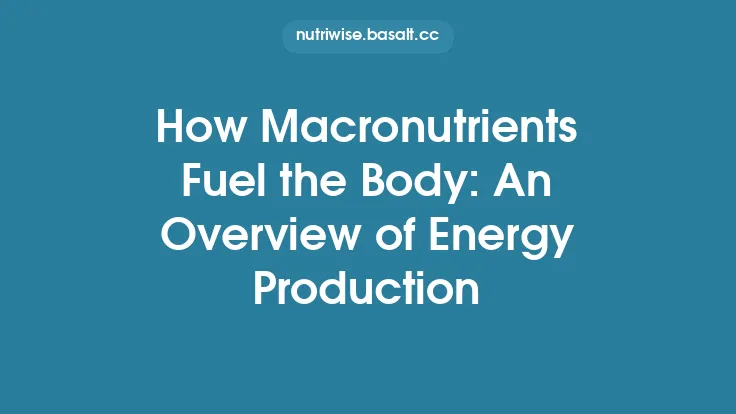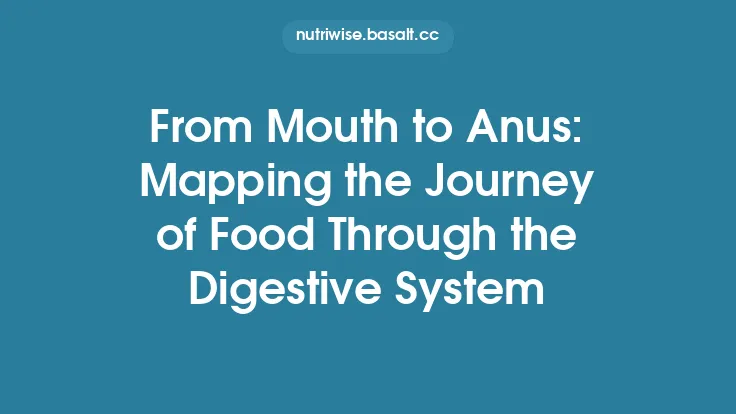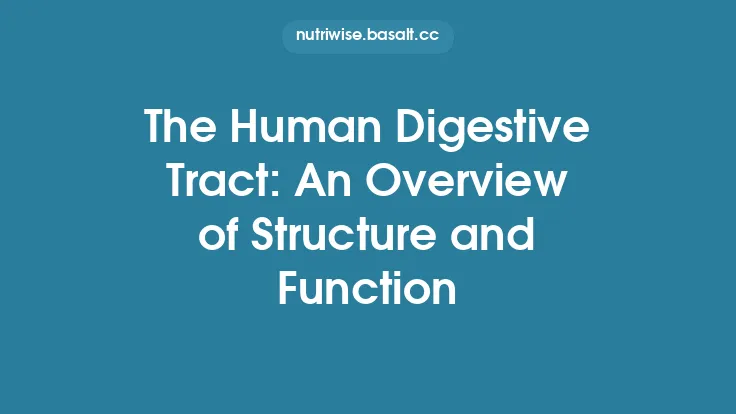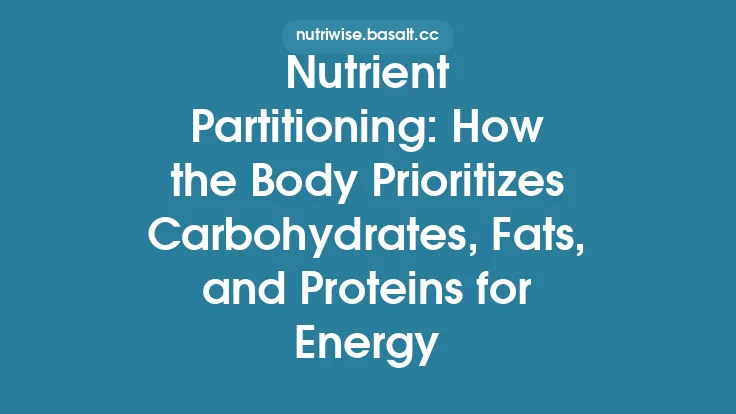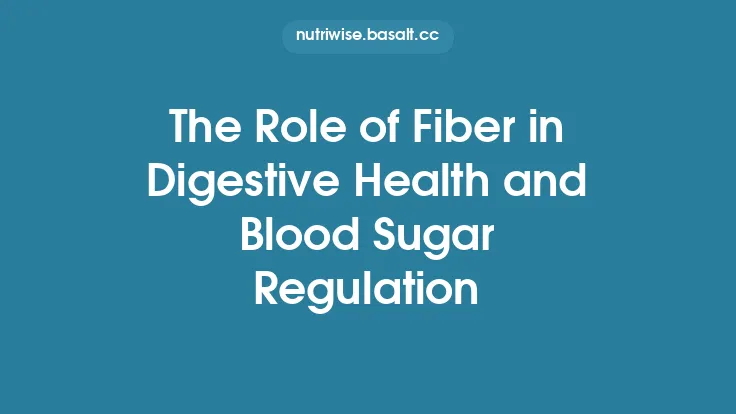The gastrointestinal tract is one of the most richly vascularized organs in the body, and its blood supply is essential for delivering absorbed nutrients to the rest of the organism. After the mechanical and chemical breakdown of food, the resulting small molecules—glucose, amino acids, vitamins, minerals, and short‑chain fatty acids—must cross the intestinal wall and enter the circulatory system. This process is orchestrated by a complex network of arteries, capillaries, veins, and lymphatics that together form the splanchnic circulation. Understanding how this network functions provides insight into the efficiency of nutrient delivery, the metabolic integration of the liver, and the physiological mechanisms that protect the body from post‑prandial stress.
Arterial Architecture of the Gastrointestinal Tract
The arterial supply to the digestive system originates from the abdominal aorta and its major branches. The three principal arteries that feed the gut are:
- Celiac Trunk – Supplies the foregut (including the liver, pancreas, and proximal duodenum). Its three main branches—left gastric, splenic, and common hepatic arteries—provide oxygenated blood to the upper gastrointestinal organs and the portal venous inflow.
- Superior Mesenteric Artery (SMA) – Serves the midgut, delivering blood to the distal duodenum, jejunum, ileum, cecum, appendix, ascending colon, and the proximal two‑thirds of the transverse colon.
- Inferior Mesenteric Artery (IMA) – Supplies the hindgut, including the distal one‑third of the transverse colon, descending colon, sigmoid colon, and rectum.
Each of these arteries gives rise to a series of arcades—interconnected loops of vessels that run parallel to the intestinal wall. From the arcades, vasa recta (straight arteries) penetrate the muscular layers and approach the mucosal surface, where they terminate in dense capillary beds. The redundancy of arcades ensures that even if one vessel is compromised, collateral flow can maintain perfusion, a feature that is crucial during periods of high metabolic demand after a meal.
Capillary Networks and Nutrient Transfer
At the mucosal surface, the arterial vasa recta transition into a capillary plexus that lies just beneath the epithelial layer. These capillaries are fenestrated, allowing rapid diffusion of small, water‑soluble nutrients. The key steps in nutrient transfer are:
- Diffusion of Glucose and Amino Acids – Transporters such as SGLT1 (for glucose) and various amino acid carriers actively move these molecules across the epithelium. Once inside the interstitial space, the concentration gradient drives diffusion into the capillary lumen.
- Electrolyte and Water Balance – Sodium, potassium, and chloride ions follow osmotic gradients, and water follows by osmosis, maintaining plasma osmolarity.
- Vitamin and Mineral Uptake – Fat‑soluble vitamins (A, D, E, K) are largely handled by the lymphatic system (see below), whereas water‑soluble vitamins (C, B‑complex) and minerals (iron, calcium, magnesium) enter the capillaries directly.
The high surface area of the capillary network, combined with the thinness of the endothelial barrier, enables the rapid clearance of nutrients from the interstitium, preventing back‑leakage into the lumen and ensuring efficient delivery to the portal circulation.
Portal Venous System: The Highway to the Liver
All nutrient‑rich blood from the gastrointestinal capillaries converges into the portal venous system, a unique vascular circuit that transports blood directly to the liver before it reaches the systemic circulation. The portal vein is formed by the union of the superior mesenteric vein (SMV) and the splenic vein, with the inferior mesenteric vein typically draining into the splenic vein or directly into the portal vein.
Key functions of the portal system include:
- First‑Pass Metabolism – The liver extracts, stores, or transforms nutrients. Glucose is taken up for glycogen synthesis, amino acids are deaminated or used for protein synthesis, and excess lipids are packaged into very‑low‑density lipoproteins (VLDL).
- Detoxification – Potentially harmful substances absorbed from the gut (e.g., bacterial endotoxins, alcohol, certain drugs) are filtered by hepatic Kupffer cells and metabolized before entering systemic circulation.
- Regulation of Hormonal Signals – Hormones such as insulin and glucagon influence hepatic uptake and release of glucose, while gut‑derived incretins (GLP‑1, GIP) modulate hepatic metabolism via the portal blood.
The portal vein’s low‑pressure, high‑volume flow is maintained by the combined arterial inflow from the SMA, IMA, and celiac trunk, as well as by the compliance of the mesenteric veins. Any obstruction (e.g., portal hypertension) can dramatically alter nutrient handling and lead to systemic complications.
Lymphatic Transport of Lipids
While most water‑soluble nutrients use the capillary route, dietary lipids follow a distinct pathway. Long‑chain fatty acids and monoglycerides are re‑esterified into triglycerides within enterocytes and packaged into chylomicrons—large, triglyceride‑rich lipoprotein particles. Because chylomicrons are too large to pass through the capillary endothelium, they are secreted into the lacteals, the specialized lymphatic vessels located in the villous core.
The lymphatic journey proceeds as follows:
- Lacteal Uptake – Chylomicrons enter the lacteal and travel through progressively larger lymphatic vessels (collecting ducts) toward the thoracic duct.
- Thoracic Duct Drainage – The thoracic duct empties into the left subclavian vein, delivering chylomicron‑laden lymph directly into the systemic circulation, bypassing the portal system.
- Peripheral Distribution – Once in the bloodstream, chylomicrons are hydrolyzed by lipoprotein lipase, releasing free fatty acids for uptake by muscle, adipose tissue, and other peripheral organs.
This dual‑circulation model—portal for most nutrients, lymphatic for lipids—optimizes the body’s ability to handle diverse macronutrients efficiently.
Regulation of Splanchnic Blood Flow
The amount of blood directed to the digestive organs is not static; it fluctuates dramatically between the fasting and post‑prandial states. Several mechanisms coordinate this regulation:
- Neurogenic Control – Sympathetic stimulation causes vasoconstriction of mesenteric arteries, reducing flow during stress or exercise. Parasympathetic activation (via the vagus nerve) promotes vasodilation, enhancing perfusion during digestion.
- Hormonal Influences – Gastrointestinal hormones such as motilin, gastrin, and cholecystokinin (CCK) have vasodilatory effects on splanchnic vessels. Additionally, nitric oxide (NO) released from endothelial cells acts as a potent local vasodilator.
- Metabolic Autoregulation – Local tissue oxygen demand drives the release of adenosine and other metabolites that cause arteriolar dilation, matching blood supply to the metabolic workload of the gut.
- Myogenic Response – Smooth muscle in the arterial wall responds to changes in intraluminal pressure, maintaining a relatively constant flow despite systemic blood pressure variations.
These regulatory layers ensure that after a meal, up to 25 % of cardiac output can be diverted to the gastrointestinal tract—a phenomenon known as post‑prandial hyperemia—without compromising perfusion of other vital organs.
Integration with Systemic Circulation
After nutrients have been processed by the liver or entered the systemic bloodstream via the lymphatics, they are distributed throughout the body. The integration points include:
- Systemic Arterial Delivery – Nutrient‑rich blood from the hepatic veins joins the inferior vena cava, passes through the right heart, and is pumped into the systemic arterial tree, delivering glucose, amino acids, and vitamins to peripheral tissues.
- Storage and Mobilization – The liver, skeletal muscle, and adipose tissue act as reservoirs. For example, excess glucose is stored as glycogen in the liver and muscle; surplus fatty acids are stored as triglycerides in adipocytes.
- Feedback Loops – Hormonal signals (insulin, glucagon, leptin) generated in response to circulating nutrient levels modulate both hepatic metabolism and peripheral tissue uptake, maintaining homeostasis.
The seamless handoff from the portal system to the systemic circulation underscores the importance of the digestive blood supply in overall metabolic balance.
Clinical Insights and Common Disorders
A solid grasp of gastrointestinal vascular anatomy is essential for diagnosing and managing several clinical conditions:
- Mesenteric Ischemia – Occlusion of the SMA or its branches can cause acute abdominal pain and intestinal necrosis. Early recognition relies on understanding the arterial territories and collateral pathways.
- Portal Hypertension – Elevated pressure in the portal vein (often due to cirrhosis) leads to variceal formation, splenomegaly, and altered nutrient handling. Management may involve shunt procedures that reroute blood flow, highlighting the portal system’s central role.
- Nutrient Malabsorption Syndromes – While many malabsorption disorders involve epithelial defects, vascular insufficiency (e.g., chronic mesenteric hypoperfusion) can also impair nutrient delivery to the mucosa.
- Lymphatic Obstruction – Blockage of lacteals or thoracic duct can cause chylous ascites, reflecting the importance of the lymphatic route for lipid transport.
- Pharmacologic Targeting – Drugs that modulate splanchnic blood flow (e.g., vasodilators, NO donors) are investigated for conditions like non‑alcoholic fatty liver disease, where altered portal delivery of nutrients contributes to pathology.
Understanding the normal physiology of the digestive blood supply provides a framework for interpreting these disease states and for developing therapeutic strategies that restore or optimize nutrient flow.
In summary, the digestive system’s blood supply is a finely tuned network that bridges the mechanical act of digestion with the biochemical world of metabolism. Arterial inflow delivers oxygen and substrates, capillary beds extract nutrients, the portal vein channels them to the liver for first‑pass processing, and the lymphatic system carries lipids directly into the systemic circulation. Dynamic regulation ensures that blood flow matches the metabolic demands of feeding, while integration with systemic pathways distributes the harvested energy and building blocks throughout the body. Mastery of this vascular choreography is essential for both basic science and clinical practice in the realm of food science, nutrition, and digestive health.
